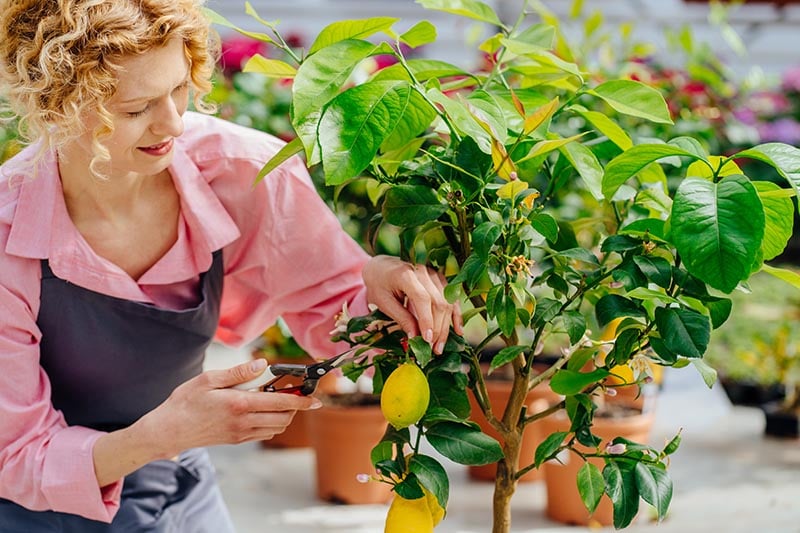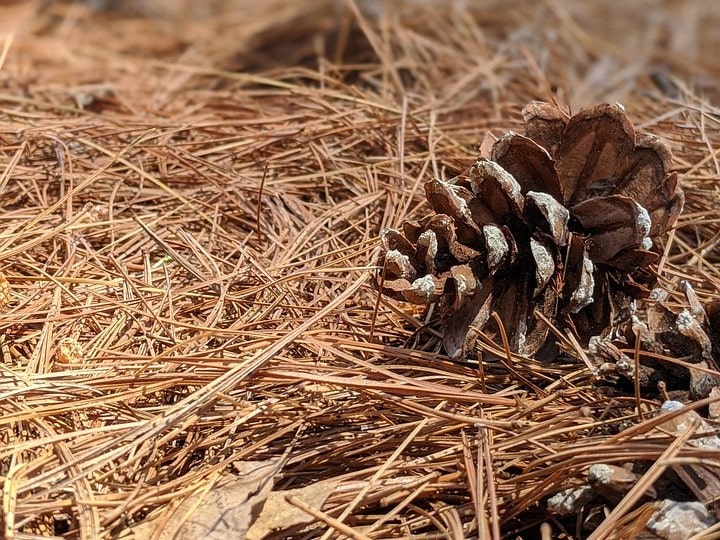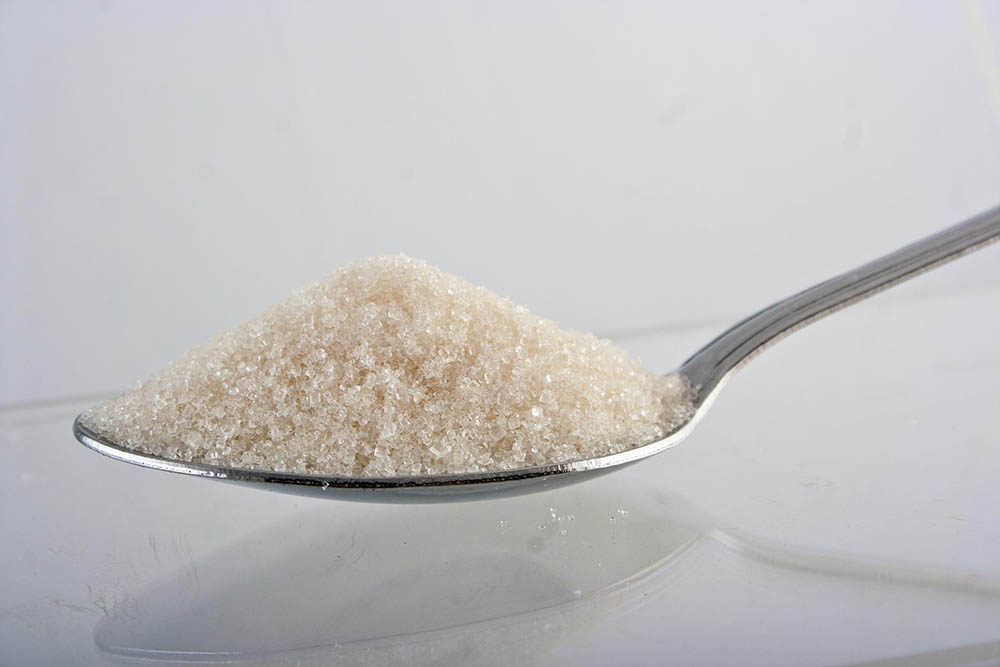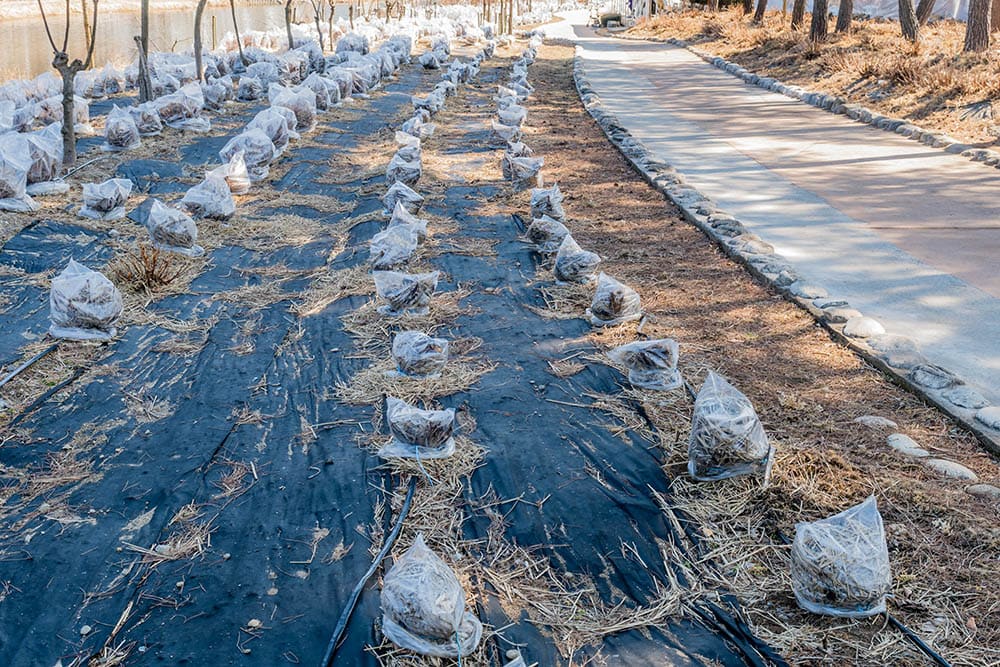Common Gardening Myths: 11 Misconceptions Debunked
-
Kristin Hitchcock
- Last updated:

There are tons of misconceptions about gardening out there. Some of these aren’t troublesome, though they may lead to extra, unnecessary work. However, others can be harmful to your garden (and sometimes even your health).
For this reason, we highly recommend researching the particular plants you’re taking care of on authority websites. Don’t just do what your neighbor says, as old wives’ tales abound.
Below, we’ve dispelled some of the most common myths to help you avoid them altogether.
The 11 Gardening Myths & Misconceptions
1. Water Burns Leaves

There is a common theory out there that watering your plants on sunny days can magnify the sun’s light and burn the leaves. However, this isn’t true. The water will evaporate before it channels enough light to even almost burn the plant’s leaves. Plus, we’d see a lot more burned leaves if this was true!
However, it is still a good idea to water at the base of your plants or in the morning. This ensures that the water has time to soak into the soil before it evaporates. Otherwise, the sun may dry the top of the soil before the bottom layers have a chance to soak up the water.
Therefore, while this myth does prompt us to water at the right time, the reason isn’t very accurate.
2. Add Sand to Soil
Many plants need well-draining soil. Otherwise, the water can build up around their roots and cause all sorts of issues. However, that doesn’t mean that you should always make the soil more draining by adding sand.
Sand does make soil drain better, as it has very poor water retention. Therefore, those with clay soil or poorly draining soil may consider adding it. Adding sand to soil also makes it hard and compacts it. This makes it more difficult for the plant to grow roots and may make the soil drain even less.
Therefore, it is better to add compost and organic matter to help with drainage.
3. Add Pine Needles for Extra Acid

It’s commonly accepted that pine needles add acid to the soil, allowing them to be utilized to adjust the PH. However, this isn’t entirely true. Fresh pine needles that are stripped right off the tree are slightly acidic. However, pine needles begin to lose this acid as soon as they fall off. Therefore, pine needle “hay” and dried pine needles are no longer acidic.
Therefore, they do not affect the pH of the soil, at all.
With that said, they can help suppress weeds and add nutrients back to the soil. The reason nothing ever grows under pine trees is that their roots are shallow and compete for nutrients—not because of the acid in their pine needles.
4. Add Gravel to Improve Drainage
It’s often suggested to add “drainage material” to the bottom of containers. The idea is that the water will move through this layer well, which will improve drainage. However, this isn’t all that helpful. It simply limits the amount of soil in the pot. For a plant to have good drainage, everything in the pot has to promote water movement—not just the last inch or so.
Therefore, it’s vital to choose a good topsoil to ensure that the pot has good drainage. Of course, you should also choose a planter with holes. Otherwise, the water won’t be able to escape.
5. Top Trees

You should never top a tree to keep it at a certain height. Trees are programmed to maintain a specific height. If they are continually topped, the tree will simply keep trying to grow to control that height. Therefore, topping a tree is only preventing the inevitable.
Of course, after losing its top, the tree will often send out suckers and try to grow rapidly to provide enough food for the root system (which will continue to grow at a normal pace). This diminishes the soil and causes the tree to sacrifice structural integrity for speedy growth. Obviously, this creates an even bigger hazard.
6. Dress Tree Wounds
Often, it is suggested to put tar, paint, or sealant on tree wounds to protect them from diseases and insects. However, trees have a natural healing process that the sealant only interferes with. Therefore, you’re harming the tree more than you’re helping (and spending extra money in the process). A callus will naturally form over the cut to help the tree stay healthy.
Therefore, your best bet is to let the tree do what it’s made to do.
7. Sugar the Soil for Sweet Fruit

It’s an old wives’ tale that adding sugar to the soil will lead to sweeter fruit or veggies. However, there is absolutely no truth behind this. A plant will not absorb the sugar in the soil and deposit it into its fruits. It just isn’t so.
If you want sweeter fruit, then your best bet is to provide your plant with plenty of water and sunlight. A healthy plant produces healthy fruit.
8. Use Leftover Tea in Fertilizer
Tea is known to contain all sorts of nutrients. However, it isn’t always the best option as a fertilizer. Not all the nutrients in tea are necessary for plants, and other nutrients may actually hinder the plant’s growth. Tea isn’t formulated for plants, so it likely won’t contain the correct nutrients unless mixed with other materials.
Tea can make a great addition to a compost pile. However, it shouldn’t be the only fertilizer you’re using.
9. Plant in Rows – Always

It is traditional to plant gardens in carefully regimented rows. However, this isn’t necessary and can actually encourage diseases and pests. Instead, you may want to mix different plants together to slow the spread of pests and diseases. Interplanting using companion principles can help your whole garden be a lot healthier.
Instead of planting the same type of plant next to each other, mix plants to lower the amount of competition.
10. Remove Leaves to Hasten the Ripening of Fruit
It’s a common misconception that veggies and fruits (like tomatoes) need the sun to help them ripen. Therefore, removing the leaves may help with the ripening process, allowing more sunlight to hit the fruits. However, this simply isn’t true.
Tomatoes and other fruits do not need sunlight to ripen. They do so at their own pace. Removing the leaves will only create an energy deficiency, leading to smaller and less tasty fruit. Therefore, leave the leaves alone and let the plant ripen the fruit naturally.
11. Pick Up Grass Clippings

Many people out their bag grass under the assumption that leaving the clippings can harm their lawn. However, the clippings actually stimulate microbes that can make your grass healthier and adds nutrients back to the soil. Over time, picking up the clippings can lead to thatch and similar issues.
Instead of spending the time picking up the clippings, just leave them where they are. If you’re really worried, get a mulching mower.
Conclusion
There are tons of gardening misconceptions that have been passed down. For one reason or another, these misconceptions just won’t die. We highly recommend researching any preconceived notions you may have about gardening before acting on them. You never know when you may be believing in something that just isn’t backed by science.
Some of the misconceptions on this list make little sense—such as sugary soil giving your sugary fruit. However, others are widely believed today.
Featured Image Credit: Iryna Inshyna, Shutterstock
Contents

